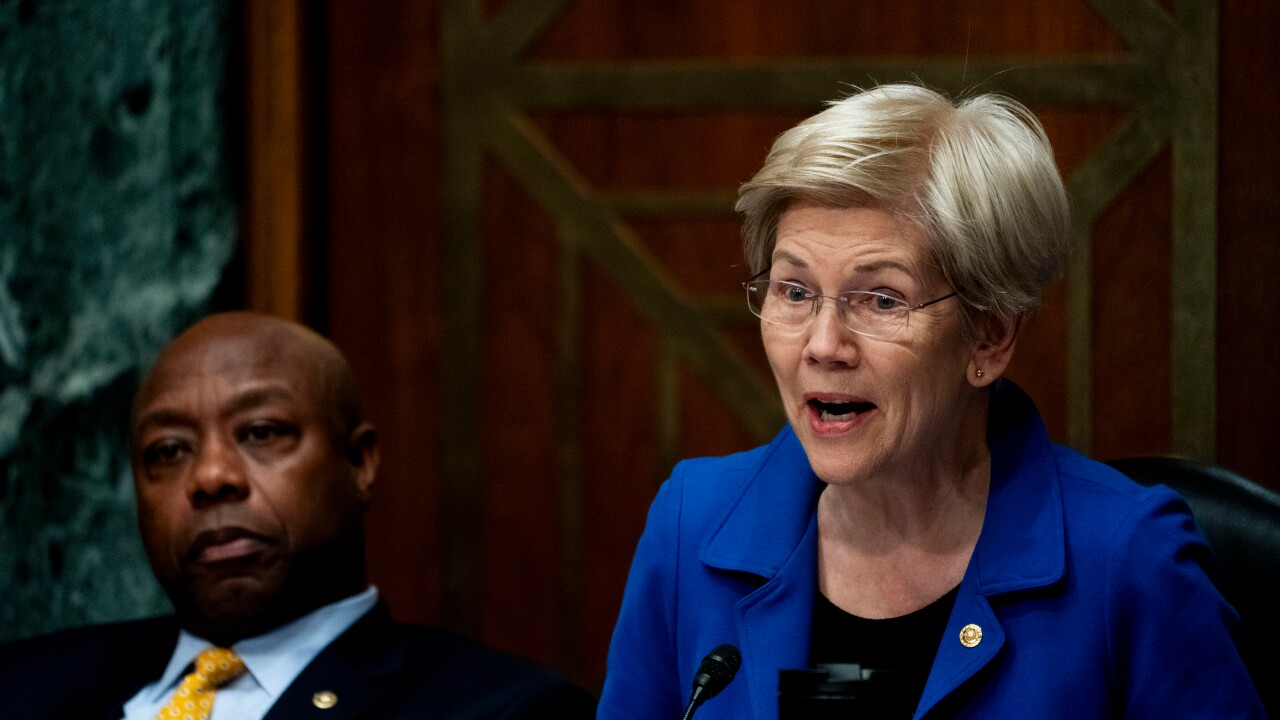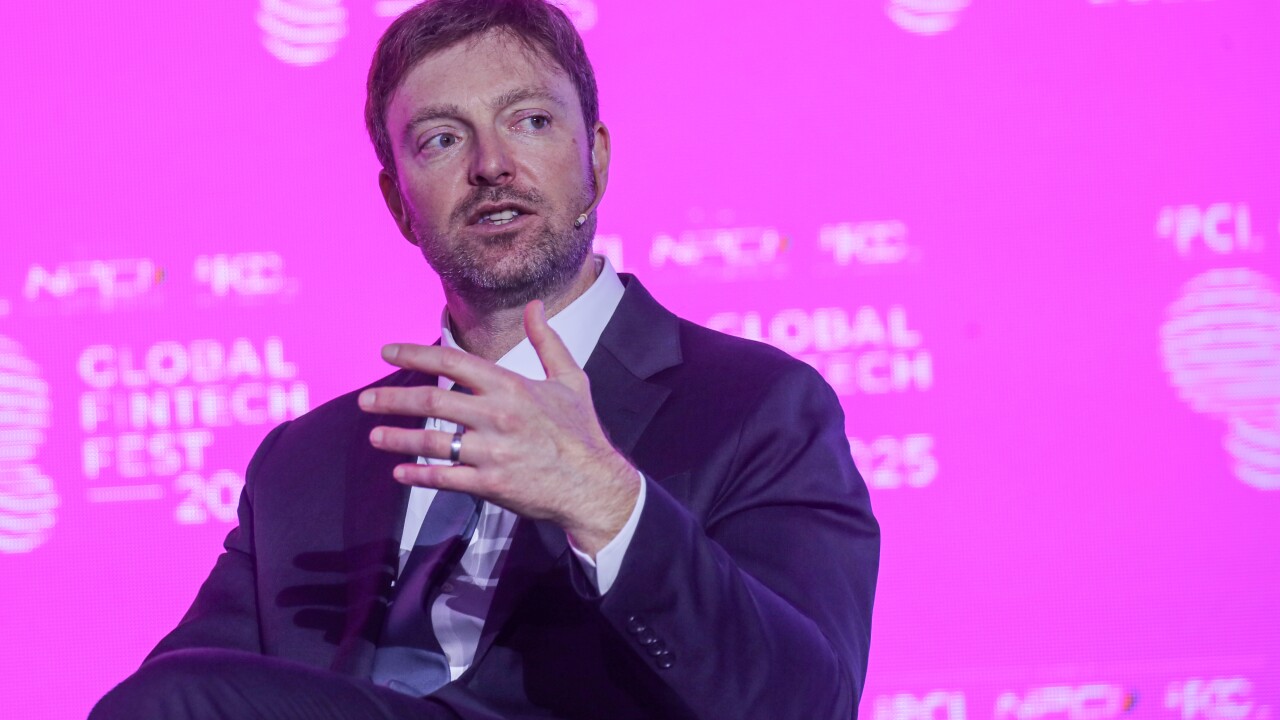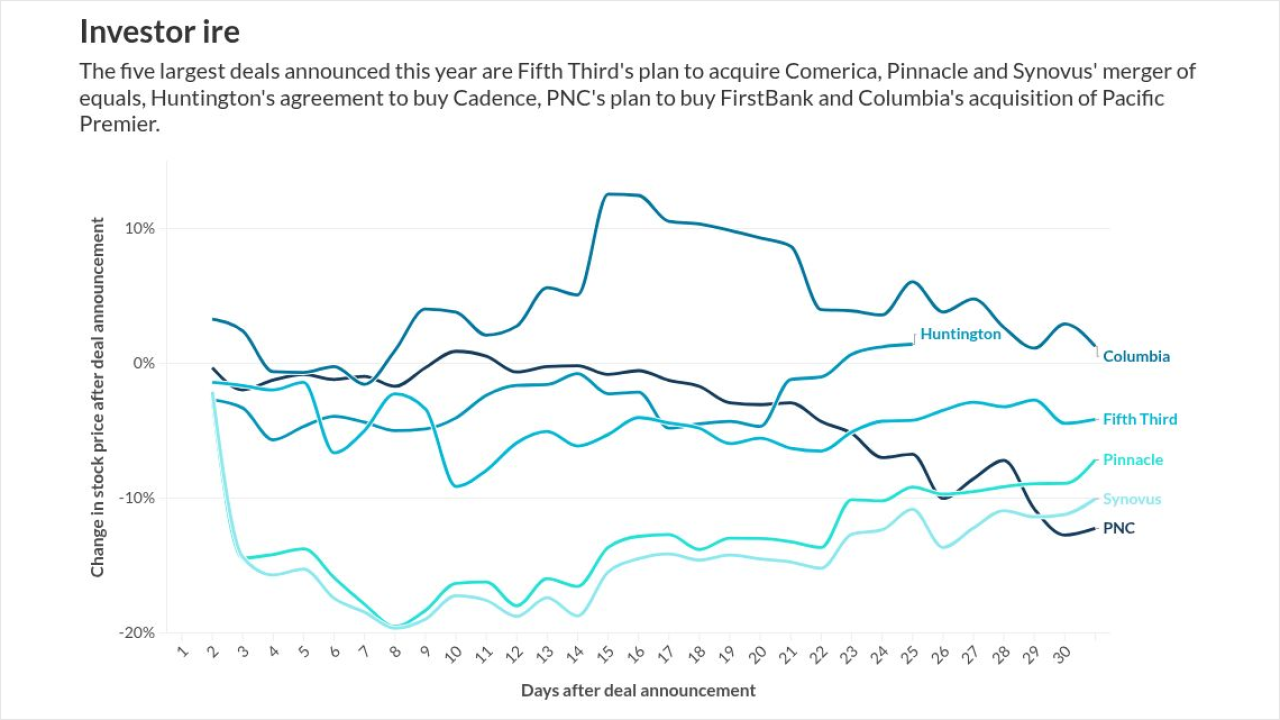
Move over, smart watches: There's a new generation of wearable technology expected to upend the payments space.
The global wearable sensors market hit nearly $1.4 billion in 2024, and it's projected to soar at a compound annual growth rate of about 18.3% between 2025 and 2033, when the market is expected to reach $6.3 billion, according to a
This increase is largely due to the growing popularity of health and fitness devices, often available with advanced technologies at lower prices than smartwatches, according to the report. More wearable devices are likely to be
"Wearables are the next step in the ongoing
Here's what banks can do to position themselves for growth in the wearable payments market.
What is wearable payments technology?
Smartwatches represent most of the wearable payments market, but there are plenty of other types of
The market for these devices will continue to develop as wearables designed primarily for health and fitness tracking continue to gain popularity. Adding
Thus, wearables will become an even more important channel for banks to consider for bringing on new customers and keeping existing ones, he said. "That is the evolution we are seeing."
Help merchants shift focus to contactless
The growth of digital payments adoption using wearables depends on contactless payments technology, yet a gap persists in contactless acceptance across the country.
Gareth Lodge, principal analyst of payments at Celent, was recently in New Orleans, where he tried to tap a payment card to pay. He had to enter a PIN and sign to complete the transaction. This underscores the need for banks to work with merchants to upgrade their terminals to accept contactless payments seamlessly.
Most merchants don't deal directly with their banks for purchasing terminals, but banks can help educate their business customers about the advantages of contactless pay.
"You might not want to be first, but you certainly don't want to be last," Lodge said banks should tell merchants. "You don't want to find out that everyone else has adopted contactless and you've been left behind."
Be forward-thinking
Even if a wearable device can be used for payments, there's behind-the-scenes work required for banks to enable the functionality.
Just a few years ago, Narayanan of Persistent Systems couldn't use a credit card issued by one of the largest banks in the U.S. in his Apple Wallet, whereas a large competitor's card worked seamlessly.
Jonathon Hamburg, founder and executive chairman of Berkeley Payment Solutions, had a similar experience with a Garmin watch. He couldn't load all his payment credentials onto that device, whereas most of them worked with his Apple Watch.
While most issuers are now enabled for Apple Wallet or Google Wallet, wearables are still a work in progress.
Some banks aren't able to "catch the demand wave" from their customers because their approval times are too long, Hamburg told American Banker.
"If compliance takes nine months [to approve] a particular device and the tech team can onboard that device in 45 days, then they are out of sync," he said.
Banks need to make sure they are meeting their security and compliance requirements without being so slow that they miss the opportunity or frustrate customers, he said.
Take advantage of marketing opportunities
To attract younger customers, banks need to show they're involved in "sexier forms of payments that young people are more likely to adopt," Celent's Lodge told American Banker.
Many young people view banks as stodgy and old-fashioned, but banks can proactively change that perception through marketing.
From a technology perspective, banks should be prepared to enable all payment forms that meet their compliance and security protocols, payments professionals said. However, they might also choose to partner with certain wearable providers for marketing purposes.
Barclays tried this a few years ago with its bPay wristband, partnering with watch brands such as Guess and Timex, in an attempt to capture the growing market for wearables. The initiative was later discontinued, but banks may have better luck as consumers' appetite for wearables grows.
A campaign along the lines of "Don't lose your card on a night out — it's always on your finger" might appeal to younger customers, Lodge said, suggesting a slogan for a hypothetical campaign.
Understand security limitations
From a fraud and security perspective, wearables are still a concern, payments professionals said.
If you're paying with a cufflink or ring and the device is lost, what happens? Is there geolocation? Does it lock immediately? These are some of the issues that device makers and banks are grappling with, Hamburg said.
Smartwatches are passcode or fingerprint protected, but rings, bracelets and other wearables have more of a security challenge because they can be used until they are deactivated, Narayanan said. "It's almost like a physical credit card as compared to a smartwatch, which is fully protected."
He predicted that these security challenges will be addressed in short order as the market advances. "Things will evolve," he said.






